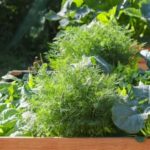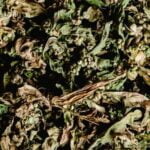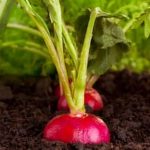Is peat moss safe for vegetable gardens? When it comes to cultivating a successful vegetable garden, the importance of soil amendments cannot be overstated.
From improving soil structure to enhancing water retention and nutrient absorption, the right amendments can make a significant impact on the health and productivity of your crops. In this article, we will delve into the use of peat moss as a soil amendment in vegetable gardening, exploring its composition, benefits, safety concerns, alternatives, environmental impact, and best practices for use.
What exactly is peat moss? This section will take a closer look at the composition of peat moss and the specific ways in which it can benefit vegetable gardens. By understanding what peat moss is and how it works within the soil, gardeners can make informed decisions about whether to incorporate it into their gardening practices.
The role of peat moss in vegetable gardens goes beyond basic enrichment – it plays a vital part in improving soil structure while aiding in water retention and nutrient absorption. In this article, we will examine these beneficial effects in detail to help you understand how peat moss can contribute to the overall health and productivity of your vegetable garden.
What Is Peat Moss
Composition of Peat Moss
Peat moss, also known as sphagnum peat, is a natural product derived from decomposed sphagnum moss. It primarily consists of partially decomposed plant material that has accumulated in waterlogged environments over thousands of years. This unique composition gives peat moss several beneficial properties, making it a popular soil amendment for gardening.
Benefits of Using Peat Moss in Gardening
One of the main benefits of using peat moss in gardening is its ability to improve soil structure. It helps loosen compacted soils, allowing for better root growth and increased air circulation within the soil.
Additionally, peat moss has excellent water retention capabilities, which can be particularly advantageous in vegetable gardens where consistent moisture levels are crucial for plant growth. Furthermore, peat moss has a low pH, making it an ideal addition for acid-loving plants such as tomatoes and blueberries.
Acidic Content and Nutrient Absorption
Peat moss also plays a vital role in enhancing nutrient absorption in the soil. Its acidic nature can help lower the pH level of alkaline soils, creating a more favorable environment for nutrient uptake by plants.
By incorporating peat moss into the soil, vegetable gardeners can ensure that their plants have access to essential nutrients such as nitrogen, phosphorus, and potassium necessary for healthy growth and abundant yields. Overall, the composition and benefits of peat moss make it a valuable component in vegetable gardening practices.
The Role of Peat Moss in Vegetable Gardens
Peat moss plays a significant role in vegetable gardens by improving soil structure, water retention, and nutrient absorption. This natural soil amendment is known for its ability to enhance the quality of garden soil, making it more conducive to plant growth.
Peat moss is composed of partially decomposed plant material, which creates air pockets in the soil, improving its structure and allowing for better root development. Its ability to hold water also aids in preventing soil compaction while providing a moist environment for plants to thrive.
In addition to its impact on soil structure and moisture content, peat moss also contributes to the overall health of the garden by promoting better nutrient absorption. By acting as a sponge in the soil, peat moss helps retain essential nutrients that are crucial for plant growth. This means that plants are able to access these nutrients more effectively, leading to healthier and more productive vegetable crops.
Furthermore, the acidic nature of peat moss can be beneficial for certain types of vegetable plants that thrive in lower pH environments. Acid-loving plants such as tomatoes, peppers, and blueberries can benefit from the presence of peat moss in the soil.
However, it is important to note that not all vegetables require or prefer acidic conditions. It’s essential for gardeners to consider the specific needs of their vegetable crops when determining whether peat moss is a suitable addition to their gardening practices.
| Benefit | Impact |
|---|---|
| Improved Soil Structure | Enhances root development and prevents compaction |
| Increased Water Retention | Prevents drying out of soil and provides a moist environment for plant growth |
| Better Nutrient Absorption | Retains essential nutrients in the soil for improved uptake by plants |
Safety Concerns
Peat moss is a popular soil amendment for vegetable gardens, but some gardeners have safety concerns about using it. However, when used properly, peat moss can be safe and beneficial for vegetable gardening. Here are some common worries about the safety of peat moss in relation to vegetable gardening and how to address them:
1. Contamination: Some gardeners worry about the potential contamination of peat moss with harmful substances such as pesticides or heavy metals. To ensure the safety of peat moss, consider using certified organic peat moss from reputable suppliers. Look for products that have been tested and approved for use in organic gardening.
2. pH levels: Peat moss is acidic, which can affect the pH level of the soil. While this can be beneficial for acid-loving plants, it may not be suitable for all types of vegetables. To address this concern, consider conducting a soil test before adding peat moss to your garden bed. This will help you determine if the pH level is compatible with the vegetables you plan to grow.
3. Environmental impact: Some gardeners are concerned about the environmental impact of harvesting and using peat moss. Peatlands play an important role in carbon storage and biodiversity, so their preservation is crucial. When using peat moss in your vegetable garden, consider using it sparingly and look for sustainably sourced alternatives whenever possible.
Alternatives to Peat Moss
When it comes to vegetable gardening, peat moss is a popular choice for improving soil structure and retaining moisture. However, there are alternative soil amendments that can also be beneficial for vegetable gardens. One such alternative is compost, which is rich in organic matter and provides essential nutrients for plant growth.
Compost helps to improve soil structure, promote beneficial microbial activity, and enhance water retention in the soil. Additionally, using compost in vegetable gardens reduces the amount of organic waste sent to landfills, making it an environmentally friendly option.
Another alternative to peat moss is coconut coir, which is a natural fiber derived from coconut husks. Coconut coir has excellent water-holding capacity and drainage properties, making it a suitable alternative for improving soil moisture levels in vegetable gardens.
It also has a neutral pH level and is resistant to decomposition, allowing it to provide long-lasting benefits to the soil. Additionally, coconut coir is a sustainable option as it is a byproduct of coconut production and does not require the harvesting of peat bogs.
In addition to compost and coconut coir, other alternatives to peat moss include aged manure, leaf mold, and perlite. Aged manure enriches the soil with essential nutrients and improves its fertility, while leaf mold increases organic matter content and enhances soil structure. Perlite improves soil aeration and drainage by preventing compaction. When choosing an alternative to peat moss for vegetable gardening, consider factors such as the specific needs of your plants, the existing composition of your soil, and environmental sustainability.
| Soil Amendment | Key Benefits |
|---|---|
| Compost | Rich in organic matter, provides essential nutrients, promotes beneficial microbial activity, enhances water retention |
| Coconut Coir | Excellent water-holding capacity, good drainage properties, neutral pH level, sustainable |
| Aged Manure | Enriches soil with essential nutrients, improves fertility |
| Leaf Mold | Increase organic matter content, enhances soil structure |
| Perlite | Improves soil aeration, enhances drainage |
Overall
Environmental Impact
Ecological Concerns
Peat moss is predominantly sourced from peat bogs, which are important ecological habitats that support unique plant and animal species. The extraction of peat moss can lead to the destruction of these delicate ecosystems, causing irreparable damage to the biodiversity of the area.
Additionally, the release of carbon dioxide into the atmosphere during peat moss harvesting contributes to environmental degradation. As a result, there are growing concerns about the sustainability of using peat moss as a soil amendment in vegetable gardens.
Sustainable Alternatives
In response to these concerns, many gardeners are exploring sustainable alternatives to peat moss. One popular option is coir, which is derived from coconut husks and offers similar benefits to peat moss in terms of water retention and soil structure improvement. Composted bark, rice hulls, and various types of compost can also be used as eco-friendly alternatives to peat moss.
Harvesting Practices
To mitigate the environmental impact of using peat moss in vegetable gardens, it is important for consumers to seek out products from responsible sources. Some companies participate in sustainable harvesting practices by carefully managing their peat bog resources and actively restoring depleted areas. Certification programs such as the Responsible Sourcing Initiative (RSI) provide assurance that peat moss has been harvested in an environmentally responsible manner.
By considering the environmental impact of using peat moss and exploring alternative options, gardeners can make informed choices that promote sustainability while still achieving healthy and productive vegetable gardens.
Tips for Using Peat Moss in Vegetable Gardens
When incorporating peat moss into a vegetable garden, it is essential to follow best practices to ensure optimal plant growth. Below are some tips for using peat moss in vegetable gardens:
- Prepare the soil: Before incorporating peat moss, it is important to thoroughly prepare the soil by removing any weeds and debris. Loosen the soil to a depth of at least 6 inches to improve aeration and drainage.
- Mixing peat moss with soil: When adding peat moss to the garden, it should be mixed evenly with the existing soil. Use a garden fork or tiller to incorporate the peat moss into the top 6-12 inches of soil.
- Watering and fertilizing: After incorporating peat moss into the soil, thoroughly water the area to help activate the peat moss. Additionally, consider supplementing with a balanced fertilizer to provide essential nutrients for plant growth.
Following these tips will help ensure that peat moss is effectively incorporated into the vegetable garden, contributing to improved soil structure, water retention, and nutrient absorption. These best practices will ultimately support optimal plant growth and yield in your vegetable garden.
Conclusion
In conclusion, peat moss can be a valuable addition to vegetable gardens due to its ability to improve soil structure, retain water, and aid in nutrient absorption. While there are some safety concerns regarding its use, such as the potential for high acidity or salt content, these can generally be mitigated by proper application and monitoring of soil conditions.
Additionally, the environmental impact of using peat moss should be taken into consideration, as its harvesting may not be sustainable in the long run.
It is important for gardeners to weigh the benefits and drawbacks of using peat moss and consider alternative soil amendments that may better suit their needs. This could include compost, leaf mold, or coconut coir, which offer similar benefits without the potential environmental implications associated with peat moss.
Ultimately, when incorporating peat moss into vegetable gardens, it is essential to follow best practices for application and monitor soil conditions regularly to ensure optimal plant growth. With proper care and consideration of environmental impact, peat moss can continue to be a valuable tool for improving vegetable garden soil and promoting healthy plant growth.
Frequently Asked Questions
Is It OK to Put Peat Moss in a Vegetable Garden?
It is generally okay to put peat moss in a vegetable garden, but it’s important to consider the specific needs of your plants and the existing soil conditions. Peat moss can help improve soil structure and water retention, which can benefit vegetable plants.
However, it’s also important to be mindful of its potential impact on soil pH and the environment, as peat moss is a non-renewable resource harvested from peat bogs.
Should I Mix Peat Moss With Garden Soil?
Mixing peat moss with garden soil can be beneficial in certain situations. Peat moss can help improve drainage and aeration in heavy clay soils, and increase water retention in sandy soils. However, it’s important not to overuse peat moss, as it can alter the pH of the soil and may not be sustainable in the long term.
Is Peat Moss Too Acidic for Vegetables?
Peat moss is naturally acidic, which could potentially affect the pH balance of the soil when used in large quantities. While some vegetables may prefer slightly acidic soil, too much peat moss could make the soil too acidic for optimal plant growth.
It’s important to monitor and test the pH of the soil when using peat moss in a vegetable garden to ensure that it remains within an appropriate range for vegetable cultivation.

If you’re looking to get into vegetable gardening, or are just looking for some tips on how to make your current garden better, then you’ve come to the right place! My name is Ethel and I have been gardening for years. In this blog, I’m going to share with you some of my best tips on how to create a successful vegetable garden.





